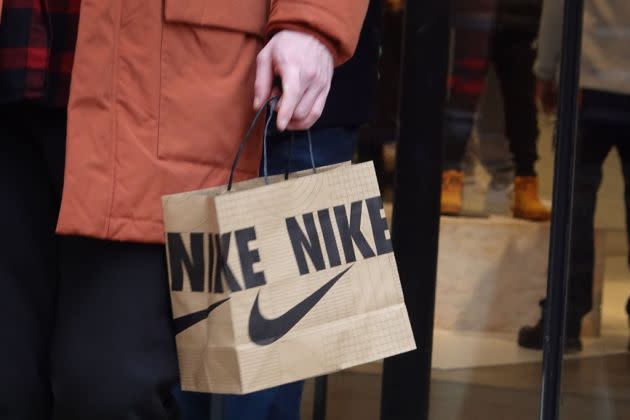What to Watch: Consumers Stumble Into 2023 With Recession in the Offing

The holiday hangover seems to be just settling in.
While consumers turned up for Christmas at the end of a tough year, shoppers are coming into an uncertain 2023 with uncertain spending power.
More from WWD
Retailers and industry experts reported a holiday season last year that started earlier and proved to be patchy.
Whether it was some letup in inflation, lower gas prices or something else, the Conference Board reported an unexpected boost last month in its Consumer Confidence Index, which rose to 108.3 from 101.4 in November following back to back declines.
That result was held up by The Present Situation Index, which increased to 147.2, but the forward-looking Expectations Index stood at just 82.4, with the research group noting 80 is “a level associated with recession.”
Mastercard SpendingPulse found that U.S. holiday retail sales, excluding automotive, increased 7.6 percent from a year earlier.
Even so, that gain was essentially wiped out with inflation running at more than 7 percent. And retailers also appear to have taken a hit to margins on top of that given all the excess inventory that built up in the system that needed to be cleared while people were in a mind to spend.
But whatever cheer the shoppers brought to the season, no one seems to expect it to last.
Recession looms, inflation pressures remain and interest rates are high and set to go higher — complicating life for just about everyone but the most elevated players in the luxury space.
And Michael Brown, a partner at consulting firm Kearney and its Americas retail leader, said consumers are coming into 2023 fresh out of any pandemic stimulus that was left over.
“The consumer’s still going to be out there shopping, but they’re going to offset the price increases with finding bargains, being more frugal, trading down a bit to be able to still get the things they need,” Brown said
But Brown said he’s expecting the consumer to slow down, not fall off a cliff.
Regardless, many retailers will need to adjust.
“I don’t think it’s crisis mode, but I think it’s time to rethink the operating model and the relationship with the consumer,” he said. “We know that retail is resilient. We will figure out our way through this, we will innovate.”
The oddness of the moment might just require new thinking.
Last year’s dramatic run up in interest rates — intended to fight inflation by weakening consumers — is going to start to cycle through to more merchants as well as the economy.
Just how painful it all gets is the big question — even for Jerome Powell, chair of the Federal Reserve, who heads up the panel that sets the U.S. benchmark interest rate.
“I don’t think anyone knows whether we’re going to have a recession or not and, if we do, whether it’s going to be a deep one or not,” Powell said last month. “It’s just, it’s not knowable.”
That is particularly telling from Powell, who arguably has more sway over the economy right now than anyone else in the Western Hemisphere.
“It’s a very confusing time for both consumers and retailers,” said Natalie Kotlyar, national leader for BDO’s retail industry group.
“The first half and especially the first quarter is going to be very challenging for consumers,” Kotlyar said. “We’ve seen a significant increase in the buy now, pay later feature. January and February is going to be the pay later. We’ve seen a significant increase year over year in credit and debt. You’ll see consumers feeling the effect of that.”
According to the New York Federal Reserve Bank, credit card balances expanded by $38 billion from the second quarter to the third quarter, making a 15 percent year-over-year increase — the largest jump in more than 20 years.
Kotlyar said retailers are going to face a “triple whammy” made up of cash-strapped consumers and an increase in post-holiday returns, which will in turn “exacerbate the excess inventory issues.”
“I’m more optimistic on the second half,” Kotlyar said. “If the economy begins to stabilize, than the consumer confidence is just going to increase significantly. “We’re going into a much better trajectory for the back half of the year.”
The second half is still a long way away and, for now, even the strongest companies, like Nike Inc., are keeping a watchful eye and staying ready to move quickly.
Matthew Friend, Nike’s chief financial officer, turned in a strong financial report just before Christmas but also sounded a note of general caution, saying that the economic worries seen in the fall were persisting.
“While over the last 90 days we’ve seen strength, those macro concerns have not abated,” Friend said. “They’re still there for the consumer. And so we continue to take a cautious approach to the [next two quarters]. We buy our inventory, as you know, on six-month lead times.”
All of this is a lot.
Fashion brands are also operating in a world that is more than an ever-changing mash-up.
“Trends in 2023 will continue to be defined by a melting pot of aesthetics,” said Kayla Marci, market analyst at data specialist Edited. “The fashion cycle has evolved so much in recent years, with consumers having more options than ever before, supporting the perception that no one single trend is ‘in’ or ‘out’ but instead, ‘everything is trending.’
“Given the high number of micro trends fuelled by pop culture and lifestyle moments, being frantically communicated on TikTok with urgency for consumption, contrasting themes like grunge, minimalism, Barbiecore and feminine glamor will all coexist in 2023,” Marci said.
Throw in interest rates, inflation, the economy, war in Ukraine, excess inventory, continued supply chain turmoil, COVID-19 and there is indeed a lot that needs to coexist in 2023.
